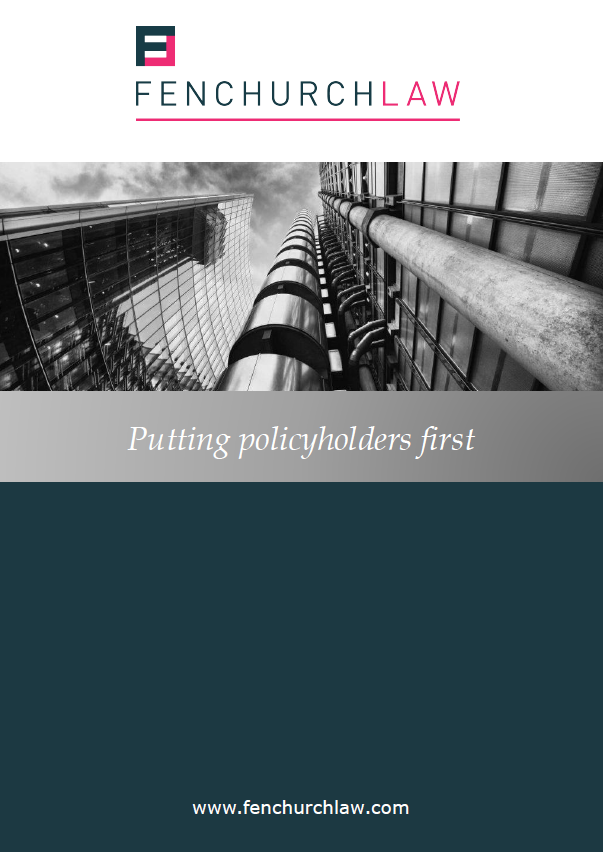
Exclusion clauses clarified
In the recent decision of Impact Funding v. AIG the Supreme Court gave important guidance on the construction of exclusion clauses in the context of Insurance policies. Whilst of particular interest to Solicitors and their insurers the decision is of wider importance.
Barrington Support Services Limited (Barrington) was a firm of Solicitors who acted for claimants wanted to pursue claims for industrial deafness. Public funding was no longer available for such claims and hence the clients needed to fund their actions by way of CFA and ATE insurance. Impact Funding Solutions Limited “Impact” provided cover for disbursements which would be incurred in pursuit of those claims. The intention was that if the litigation was successful, the loans would be repaid by the defendants to the action and, if unsuccessful, by ATE insurers. Crucially in this case, Impact also had a direct cause of action against Barrington under the terms of a Disbursement Funding Master Agreement (DFMA). It provided amongst other things;
(a) at clause 6.1, that each party would “comply with all applicable laws, regulations and codes of practice from time to time in force… and each party indemnifies the other against all loss, damages, claims, costs and expenses… which the other party may suffer or incur as a result of any breach by it of this undertaking”; and
(b) at clause 13.1, Barrington represented and warranted to Impact that “the services provided or to be provided by [Barrington] to the Customer shall be provided to the Customer in accordance with their agreement with the Customer as set out in the relevant Conditional Fee Agreement”.
Loans amounting to £581,353 were made by Impact. Barrington failed to investigate the claims properly which either failed or were never pursued. ATE insurers refused to pay out as a result of Barrington’s negligence, leaving Impact substantially out of pocket. Barrington became insolvent and Impact brought a claim against Professional Indemnity Insurers, AIG, under the Third Party Rights against Insurers Act.
The professional indemnity policy written by AIG (“the Policy”) was written on materially the same terms as the Minimum Terms and Conditions.
The insuring clause provided: “The insurance must indemnify each Insured against civil liability to the extent that it arises from Private Legal Practice in connection with the Insured Firm’s Practice…”.
At clause 6.6 the Policy contained an exclusion for:
(a) trading or personal debt of any Insured; or
(b) breach by any Insured of the terms of any contract or arrangement for the supply to, or use by, any Insured of goods or services in the course of the Insured Firm’s Practice; or
(c) guarantee, indemnity or undertaking by any particular Insured in connection with the provision of finance, property, assistance or other benefit or advantage directly or indirectly to that insured…”
The judge at first instance decided that the exclusion applied. The Court of Appeal overturned that decision, holding that it was inapplicable and that AIG were liable under the policy. AIG appealed to the Supreme Court. By a majority of 4 to 1 the Appeal was allowed. The Supreme Court had to decide:
(a) Whether the contract between Impact and Barrington was a contract or arrangement for the supply of services to Barrington by Impact and hence excluded (notwithstanding that Impact’s loss arose from Barrington’s negligence in handling its clients claims)
(b) Whether it was necessary to construe the exclusion clause narrowly limiting its effect so as to make it consistent with the purpose of the Policy as a whole, given that this was a Professional Indemnity policy.
In relation to (a) the Supreme Court found that the contract was indeed a contract for Impact to supply services to Barrington: (i) Barrington contracted with Impact as a principal and not as an agent for the clients (ii) Barrington clearly obtained a benefit from the funding of disbursements since it enabled the claims to be fully funded. Barrington’s clients were able to pursue their claims which they could not otherwise afford and hence it was able to earn fees (iii) Barrington itself had paid an administration fee and had agreed to pay the loan itself should the client(s) breach the credit agreement.
In relation to (b) the Supreme Court found that there was no reason to imply additional words to limit it’s scope, it was not necessary to give the contract business efficacy or was so obvious that it went without saying. The Policy should be construed as having a broad insuring clause but subject to a number of exclusions which were “an attempt to identify the types of liability against which solicitors are not required by law to be covered by way of professional liability insurance”. There was no reason to construe those exclusions narrowly.
Good news for Insurers and bad for insureds? Not necessarily. Although obviously bad news for Impact. The decision as a whole should be welcomed as it provides clarification in relation to the construction of the policy. Many firms are considering their options not only in relation to Alternative Business Structures, but also in relation to litigation funding as a whole. We would also suggest it is good news for the Solicitors Profession as a whole. As had the decision gone the other way, potential sky high premiums for next renewal should insurers be obliged to cover claims such as this?
Pauline Rozario is a Consultant at Fenchurch Law
Other news
Anatomy of an Insurance Dispute
22 October 2025
In early 2025, we participated in a panel discussion about the similarities and differences in the process of resolving…
You may also be interested in:
Archives
Categories
- Events
- Webinars
- Comparing German and English Insurance Law – A Series
- Construction Risks
- Operations
- Business Development
- Construction & Property Risks
- News
- International Risks
- Legislation
- Financial & Professional Risks
- Case Law
- Professional Risks
- Press Release
- Uncategorized
- The Good, the Bad and the Ugly
- Fenchurch Law Webinars
- Stonegate
- Newsletter



